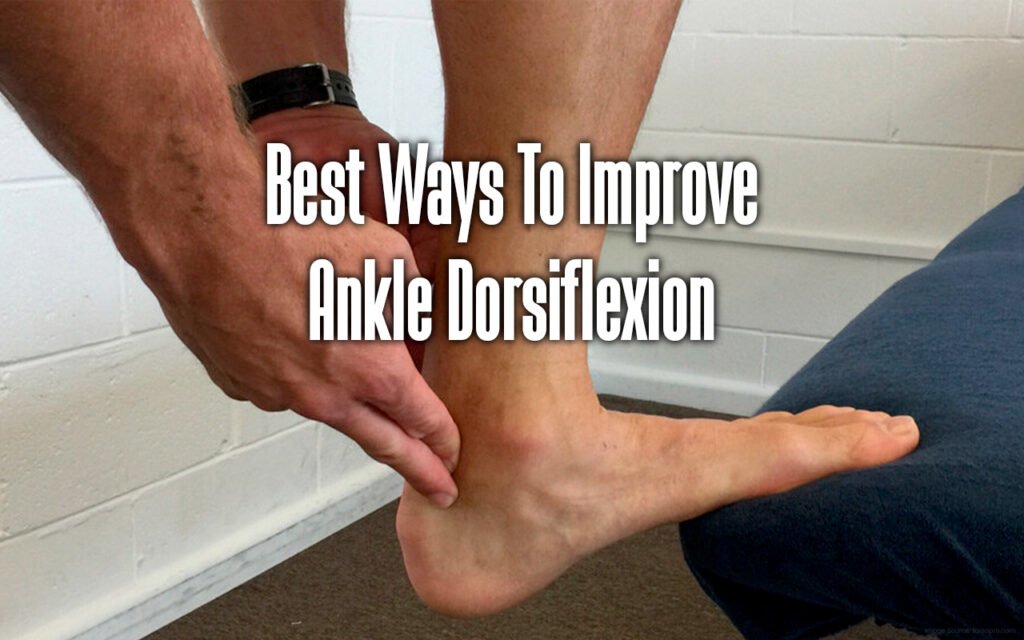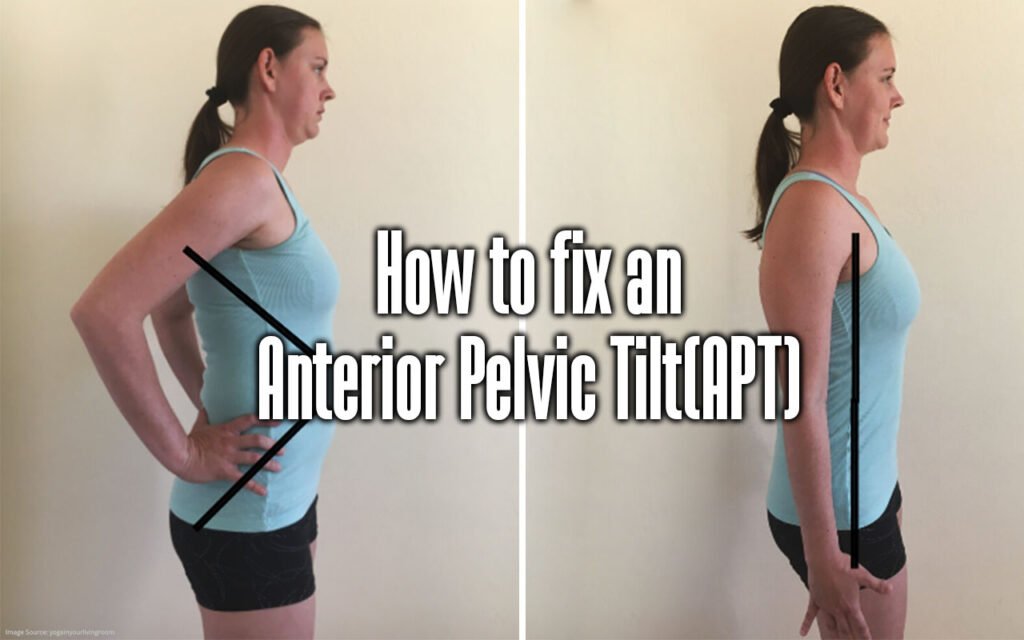[Updated on 1 January 2024] Even when not carrying weight, it’s estimated that around 20% of individuals have flat feet, which means their arches are weak or non-existent. In this post, we’ll look at the most typical causes and symptoms of flat feet and easy exercises to help restore your flat feet at home. We’ll look at some of the finest solutions available on the market to assist with this prevalent posture problem. What are Flat Feet? Flatfoot is a condition where either one or both feet have very little to no arch, also known as having flat feet. When you are standing, your foot’s pads make contact with the ground. The foot’s arch is usually not visible, but it may become visible when you lift your foot. At birth, it is common for babies to have flat feet, which usually develop arches by age 6. As adults, around 20%…
Best Exercises to Fix Your Posterior Pelvic Tilt
[Updated on 1 January 2024] The posterior pelvic tilt, also known as flat back syndrome, is a condition that occurs when the pelvis tilts backward, causing the lower back to flatten. This can lead to lower back pain, poor posture, and decreased mobility. Fortunately, there are several ways to fix posterior pelvic tilt. Regular exercise is one of the most effective ways to fix posterior pelvic tilt. You can perform exercises like hip flexor stretches, glute bridges, and pelvic tilts to enhance your posture and strengthen the muscles in your pelvic area. In addition, exercises that strengthen the core and lower back muscles can also be beneficial. Correcting posture can also be an effective method for addressing posterior pelvic tilt. This involves being aware of your daily posture and making minor adjustments. This can include sitting up straight, standing tall, and keeping your shoulders back. Addressing any underlying issues contributing…
Best Exercises You Can Do To Correct Swayback Posture
[Updated on 1 January 2024] Swayback posture, lordosis or hyperlordosis, is a postural deviation characterized by an exaggerated inward curvature of the lower back. This condition causes the pelvis to tilt forward, resulting in an increased arch in the lumbar spine. While swayback posture is not inherently beneficial, understanding its implications and implementing appropriate measures can help individuals address related issues and improve their overall posture and well-being. Swayback posture can arise from various factors, including poor posture habits, muscle imbalances, certain medical conditions, and structural abnormalities. It can lead to multiple symptoms, such as lower back pain, hip discomfort, limited mobility, and an altered gait pattern. Additionally, this posture can negatively impact the alignment of the entire spine, leading to imbalances in other regions, such as the thoracic spine, neck, and shoulders. Addressing swayback posture involves a multifaceted approach that includes postural correction, strengthening and stretching exercises, and lifestyle…
Best Ways To Fix Lateral Pelvic Tilt
Updated on 1 May 2023] The lateral pelvic tilt, also known as pelvic obliquity, is a condition characterized by an uneven alignment of the pelvis, which results in one hip being higher than the other. This misalignment can cause problems, such as uneven joint wear and tear, muscle imbalances, and postural issues. This can occur for various reasons, including leg length discrepancies, scoliosis, muscular imbalances, and poor posture. While the condition can be painful and limit mobility, several treatment options are available to alleviate symptoms and improve pelvic alignment. Causes of Lateral Pelvic Tilt Lateral pelvic tilt refers to the uneven positioning of the pelvis, where one side is higher than the other. There can be several causes of lateral pelvic tilt, including: Muscle imbalances- Tight or weak muscles on one side of the pelvis can cause it to tilt to that side. For example, tight hip flexors or quadriceps on…
Best Exercises To Fix Duck Feet and Walk Properly
[Updated on 1 May 2023] The condition known as Duck Feet occurs when toes point downward and may curl under. Sometimes it can be difficult to identify if someone has this condition, but generally speaking, if a person’s heels drag on the ground while they walk instead of lifting up, it could be a sign of this condition. There are several methods to prevent or fix this issue, which can include wearing high-quality shoes and performing exercises to strengthen the muscles in the feet. Duck Feet Condition It’s important to address duck feet, as it’s not a simple condition to just live with. It could cause further physical problems, so finding ways to correct it is necessary. Sometimes it could resolve on its own, but not always. Dealing with duck feet for a longer period of time can cause physical problems, so it’s best to find a quicker solution. This condition…
Best Ways To Improve Ankle Dorsiflexion
[Updated on 1 May 2023] Ankle dorsiflexion refers to bringing the top of the foot towards the shin or upward towards the body. It is a critical joint action at the ankle joint, allowing for various activities such as walking, running, and squatting. This movement is facilitated by specific muscles and ligaments surrounding the ankle. The ankle joint consists of the tibia (shinbone) and fibula (smaller bone in the lower leg) connecting to the talus (one of the bones in the foot), creating a hinge joint. Dorsiflexion occurs when the foot and ankle move in a direction that brings the toes closer to the shin. This movement is opposed to plantar flexion, which involves pointing the toes downward, away from the shin. Several muscles play a crucial role in ankle dorsiflexion. The primary strength responsible for this movement is the tibialis anterior at the front of the lower leg. When…
The Ultimate Guide To Fixing Knee Valgus
[Updated on 1 May 2023] Knee valgus is a problem in which the knees bend inward, also known as “knock knees.” It’s a typical misalignment characterized by the knee bending inward. This problem occurs most frequently in young children, although it may last into adulthood in some situations. A variety of factors can cause knee valgus. Some are structural changes, such as rheumatoid arthritis or a knee joint, femur, or tibia deformity. Knee valgus due to these anomalies is unavoidable and can’t be repaired, but there are several treatment choices accessible that may assist relieve the discomfort caused by it. Another frequent cause of knee valgus that may be prevented and healed – muscular imbalances caused by bad posture – is our main concern. In this post, you’ll discover what knock knees is, where it originates, and how to fix knee valgus due to bad posture. What is Knee Valgus?…
What Is Anterior Pelvic Tilt & How Do You Fix It?
[Updated on 1 May 2023] You may remember that Anterior Pelvic Tilt is the substance produced by your cells to provide you with energy. If you swap two letters in a word, it can turn into APT, which has the potential to stop you from moving forward. Anterior pelvic tilt refers to a condition where the pelvis tilts down more than it tilts forward. It is partly an anatomical feature and partly a bad habit. When this primary structure is out of whack, it can induce a slew of postural issues that lead to back discomfort, stiff muscles, and a restricted range of motion. The good news is that an anterior pelvic tilt may be treated and corrected through specific exercises and stretches, which we’ll review in this post. We’ll also review how an anterior pelvic tilt develops and the treatment options to reverse it. Let’s get going! What is…









